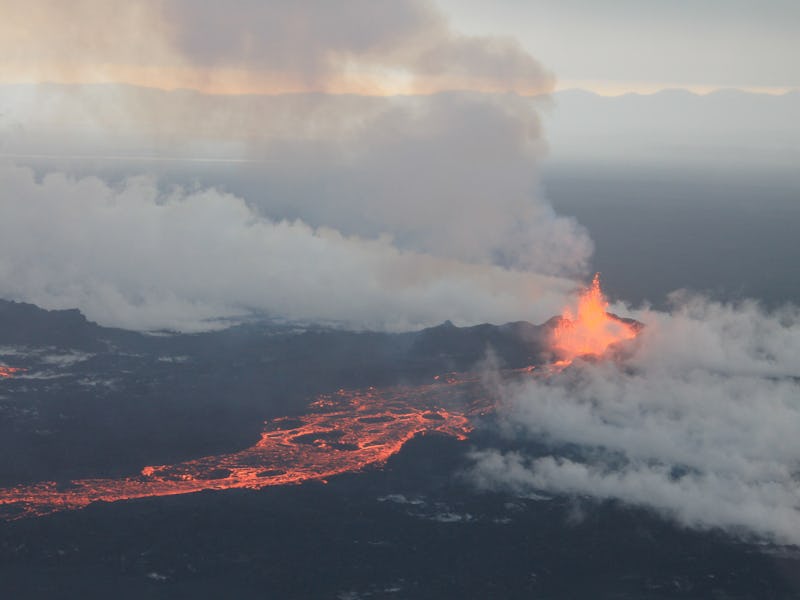The Volcano Under Europe's Largest Glacier Is Ready to Blow
Earthquakes indicate that an eruption might be imminent.

A series of increasingly strong earthquakes shook Iceland’s Bárðarbunga volcano system at the end of October, a warning that it could erupt soon. Iceland is no stranger to seismic activity, but these stronger quakes indicate that the magma pressure in the Bárðarbunga system is rising, possibly in advance of an eruption.
The October quakes measured 3.9, 3.2, 4.7, and 4.7 in magnitude, National Geographic reports.
If Bárðarbunga erupts, it won’t be an immediate danger to locals, since it’s located in a pretty remote part of Iceland. But the effects of an eruption could affect a lot of people many miles from the volcano itself.
When Bárðarbunga last erupted — it did so continually between August 2014 until February 2015 — the dust cloud it emitted, composed mostly of sulfur dioxide, negatively affected air quality in Iceland. But perhaps most memorably, when a volcano called Eyjafjallajökull erupted in Iceland in 2010, the massive dust clouds it produced over Europe caused 100,000 flight cancellations, leaving 10 million people stranded and costing airlines nearly $2 billion, the Telegraph reports.
Bárðarbunga erupted from 2014 to 2015, causing massive dust clouds over Europe.
It’s not totally clear what will happen if Bárðarbunga erupts, or even whether it will at all. But its unique set of circumstances indicate that if it does, it could potentially create massive clouds, like Eyjafjallajökull did. According to researchers who investigated the causes and effects of the 2010 eruption, it’s the volcano’s proximity to a huge glacier that helped create all the clouds. “This rapid cooling made the magma contract and fragment into fine, jagged motes of ash,” reported LiveScience in 2012.
Bárðarbunga, which is located under Iceland’s biggest glacier, Vatnajökull, could have some of these same issues, but that all depends on where the eruption occurs. The volcanic system is 120 miles long and 16 miles wide, with some portions located under hundreds of feet of ice. If its magma contacts the surrounding ice, the explosions could be violent, as was seen in 2010.
Smoke emitted from the 2014 explosion was largely composed of irritating sulfur dioxide.
This doesn’t necessarily mean a lot for Icelanders, who will likely be effectively evacuated since Iceland is so used to earthquakes and volcanoes. But it does mean that Bárðarbunga’s eruption might spew up some big clouds, potentially affecting other Europeans.
What this potential eruption probably does not mean is that the glacier will melt entirely. The heat from a volcanic eruption can be massive, and it could definitely cause some glacial melting and subsequent flooding. But Bárðarbunga is probably not going to melt the glacier if it erupts.